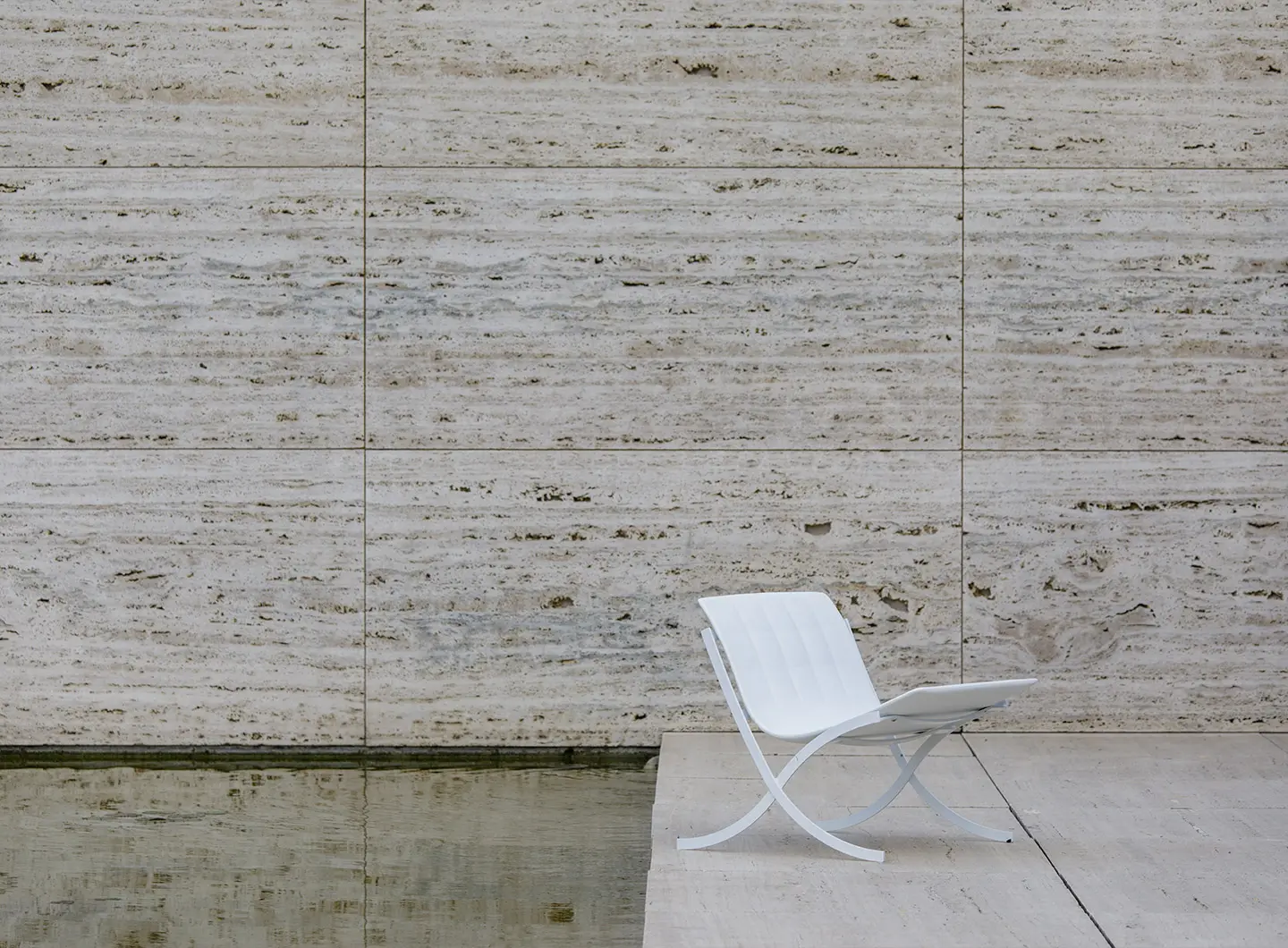In partnership with MiCodmc, a selection of establishments ripe for discovery during the 63rd edition of the Salone del Mobile.Milano, from 8th to 13th April
Stone and the lure of a challenge: three exhibitions to catch this autumn

Barceloneta, Serralunga, design Raffaella Mangiarotti
The projects that are currently mining an ancient material and pushing the boundaries of home living. In three unmissable events
There are Roberto Sironi’s contemplative interpretation and the Millim Studio’s harmonious cross-sections, Ilaria Bianchi’s intuitive reclamation and Paolo Ulian’s masterful carvings: the contemporary design scene is packed with examples, because stone, in all its forms, exerts a mysterious archaic charm on the creativity of designers of all generations.
Without going back to the origins of ‘good design’ and trampling on the toes of Angelo Mangiarotti — to whom Agape dedicated several rooms at its 50th anniversary exhibition at the Mincio Park headquarters - it is worth underscoring a few passages from Ugo La Pietra’s book Lithos. Pietre Marmi Mosaici nell’Artigianato Artistico Contemporaneo, [Lithos. Stones Marbles Mosaics in contemporary artistic craftsmanship] in an attempt to find out why so many people love surfing on stone surfaces. “Altering the shape or consistency of stone is the first action that man makes in art and architecture,” writes Domenico Potenza. A seemingly simple act, but one that is actually by no means easy to achieve: “given that that action triggers a transformation that changes the primitive nature of places to retain in its memory the origin of construction.” A sort of baptism of fire for designers keen on getting to grips with the harshness of this ancient material.
Testament to this are at least three contemporary episodes, in which the pencil transforms rock into docile domestic animals and orchestrates the space with new harmonies.
The Episodi di Mosaico Contemporaneo [Episodes of Contemporary Mosaic] exhibition curated by Maria Cristina Didero at Palazzo Rasponi delle Teste (Ravenna, runs until 14/01/2024), attempts to steer mosaic in the direction of the world of industrial design. Along with six designers and creative talents (Arthur Arbesser, Atelier Biagetti, Gio Tirotto, Marco Guazzini, CARA \ DAVIDE and Francesca Lanzavecchia), the curator has attempted to cross-pollinate the everyday dimension with material explorations. “The tradition of mosaic has a crucial role to play in Ravenna, even influencing the thoughts of the psychologist Carl Gustav Jung,” says Didero, reiterating that mosaic is a patient and sacred art. “It is the instrument through which Divine Inspiration is manifested: light transforms the opacity of the material into a kaleidoscopic play of colours.” This is demonstrated in Gio Tirotto’s Andamenti series of light bodies that slide across the walls, bringing LEDs and opalescent glass tiles together: “my way of enabling centuries-apart techniques and technologies to dialogue.” Despite the challenges associated with serial production, mosaic is a ‘type-of-construction’ to quote La Pietra, lending itself well to the challenges of the contemporary.
It is no coincidence that the great surrealist writer Roger Caillois wrote: “More than once, I have thought that it was appropriate to look at stones as a kind of poem.” Villa Medici, the French Academy in Rome, has devoted the exhibition Stories of Stones. After Roger Caillois (runs until 14/01/2024) to him, an exploration of his collection of ‘valuable mineral specimens.’ The Milanese studio PioveneFabi has set out the collection in the manner of a prologue to the exhibition path. In their introduction to the catalogue, the curators Jean de Loisy and Sam Stoudzé, say: “It is these rocks that the staggering reason of the Renaissance analyses, as half-science and half-magic; it is these stones that Chinese scholars collect, looking in crevices, caves, the folds of material of the escaped, doors for the spirit.” Ambra Fabi and Giovanni Piovene’s project pierces the grandeur of the rooms to underscore the energy released by the stones and their temporary grafts: light architectural marks that chart the progress of history through the power of colour alone. Rather like Raffaella Mangiarotti’s 2011 extremely striking Barceloneta for Serralunga, which paid homage to Mies Van Der Rohe. Now, at Barcelona Design Week, the chair, in all its proud lightness, has finally struck up a dialogue with the monumental grandeur of the marble walls of the Barcelona Pavilion, a modern architectural milestone. No pun intended.

In memoriam: David Lynch
The American director has left us at the age of 78. The Salone del Mobile.Milano had the honor of working with him during its 62nd edition, hosting his immersive installation titled “A Thinking Room”. An extraordinary journey into the depths of the mind and feelings. His vision will continue to be a source of inspiration.



 Salone Selection
Salone Selection

















